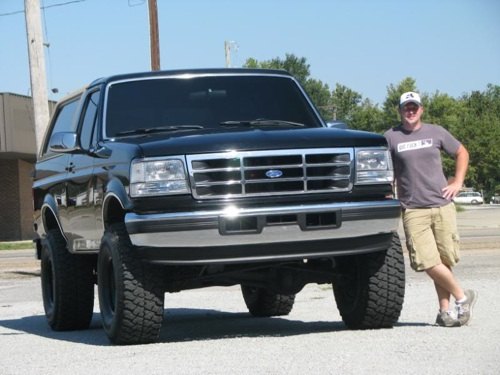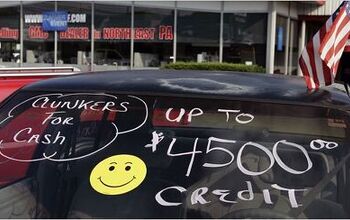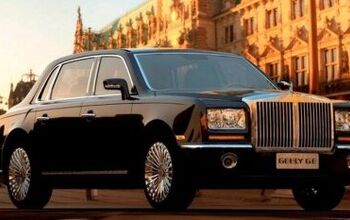Editorial: In Defense of . . . Cash4Clunkers
Well, it looks like the American version of cash-for-clunkers is going to get past Capitol Hill, and I find myself conflicted. On the one hand, I’m getting a little sick and extra wary of more money going to prop up auto sales (I figure there is going to have to be a real reckoning before things can get better, and I’m leaning toward letting it happen). On the other hand, considering what it is (actual law-to-be and not an academic case study) this is about as good a clear-the-clunkers bill as we’re going to get. The New York Times Freakonomics blogger Steven Levitt looked at this one on Friday (I went over Germany’s version in February). Just about everything he says is true, but there is one point he missed (and was nice enough to call attention to) that throws the whole argument in opposition out of whack. We’ll get there, but first, what’s right about it?
The first thing they got right is the credit for scrapping. Back in February, I complained that the €1000 credit was too small to motivate much action. I was wrong, but only just—the hottest sales went to the cheapest car on the market. $3500 to $4500 is a good number, about a 20 to 25 percent down payment on a lot of practical vehicles (enough to keep from getting too far upside down), without completely messing up the used-car market.
Then there are the ownership and scrapping rules: simple, straight-forward and mostly enforceable (someone will run a scam, they always do, but that will be the exception). We want running vehicles taken off the road for good, so the vehicle must have been insured for a year and must be scrapped.
The mileage rules seem both too open and too restrictive. A lot of vehicles will fit the mileage rules and a lot more will qualify to be purchased. On the surface, this is greenwashing and pretty weak at that. It’s actually a good thing; the law is aimed at people buying actual practical vehicles, rather than propping up a handful of favorite models (most prospective buyers of “green-mobiles” don’t own a qualifying vehicle anyway). All of these rules are straightforward and defensible because of another effect.
For a blog about unintended consequences, Levitt really blew the most important (unwritten) part of the law. At least he was open about not knowing the true prices of used cars. Bad as the new car market has been, the used car market has been worse (though showing signs of recovery), especially older SUVs (the very target this kind of cull). A simple glance at his feedback shows him that 4000 odd dollars is a 400-500% improvement in value for a large number of formally “popular” vehicles.
It is this margin between “book” value and “bill” value that will drive most of the action on this bill (there will be exceptions, but bad cases make bad law). A better name for the bill would be the “Get the Blazers and Explorers off the Road Act.”
Once upon a time, these two vehicles ruled the car market, along with a few others (e.g., Durango) and foreign relations (e.g., Rodeos). This success came back to bite them when SUV demand dropped. Unlike their bigger cousins, they couldn’t offer much “utility” to justify their cramped size and thirst. There are plenty of alternatives, from sedans, to wagons, to CUVs that can do everything they can do and better while being roomier and more fuel-efficient. Also, they are notably thirsty (remember 18 mpg is the ceiling, not the floor). If you’re trying to push average mileage higher, the least useful gas hogs are a good place to start. Especially since oversupply and changes in demand have dropped trade-in values for these old-school SUVs down near three figures.
While most of the culled vehicles are likely to be domestic, the incentive applies to any purchase. The competition gets to sell to people who were likely out of their reach before, while the domestics get the additional bonus of getting rid of some of the most troublesome pigs in the python. Hopefully, this reduction will help push up residual values, which is the only practical way the car market will get to anywhere near the old peak. Of course, for a diet to work, you have to change your habits as well.
Again, I’m of two minds on this law. I don’t want to see an endless sea of nickel-and-dime assistance bills coming out of Washington (propping up two companies, one needing to die, and one that seems unlikely to change, is bad enough). On the other hand, once you strip away the trappings, the bill is well thought out and (comparatively) cheap. It’s no magic bullet, but at least it’s pointed at the right target.
More by Andrew Dederer
Latest Car Reviews
Read moreLatest Product Reviews
Read moreRecent Comments
- Mebgardner I test drove a 2023 2.5 Rav4 last year. I passed on it because it was a very noisy interior, and handled poorly on uneven pavement (filled potholes), which Tucson has many. Very little acoustic padding mean you talk loudly above 55 mph. The forums were also talking about how the roof leaks from not properly sealed roof rack holes, and door windows leaking into the lower door interior. I did not stick around to find out if all that was true. No talk about engine troubles though, this is new info to me.
- Dave Holzman '08 Civic (stick) that I bought used 1/31/12 with 35k on the clock. Now at 159k.It runs as nicely as it did when I bought it. I love the feel of the car. The most expensive replacement was the AC compressor, I think, but something to do with the AC that went at 80k and cost $1300 to replace. It's had more stuff replaced than I expected, but not enough to make me want to ditch a car that I truly enjoy driving.
- ToolGuy Let's review: I am a poor unsuccessful loser. Any car company which introduced an EV which I could afford would earn my contempt. Of course I would buy it, but I wouldn't respect them. 😉
- ToolGuy Correct answer is the one that isn't a Honda.
- 1995 SC Man it isn't even the weekend yet


































Comments
Join the conversation
PCH101, may I offer my apology for confusing you with another commentator. It was agenthex who said simply "No, because you forgot the trade in value." I sincerely regret my error. (BTW, I did not mention trade-in value for the clunker because it would be nominal--dealers won't give more than a few hundred for a true clunker--and it'd be the same for either purchase.) I was pointing out the vast difference between a clunker's market value and a voucher value. I should also say that you are correct that in a country with forty-odd million used vehicle sales annually, the million or so vouchers will not significantly distort the market overall. But there seems reason to think there could be a detectable hit on near-new vehicle values, and the number of cheap cars available to buy. Steven Lang put it well: "this program will obviously make economical cars more expensive for those who already chose to drive that type of car in the first place. Why should they (or their children) subsidize someone else’s decision?"
You asked whether there was anything wrong with your assumptions. I pointed to a clear error which shows it wasn't thought through well. I would think most cars being actively insured are worth something. In any case, it's something to push people who may be tentative with a big ticket purchase now over the top.